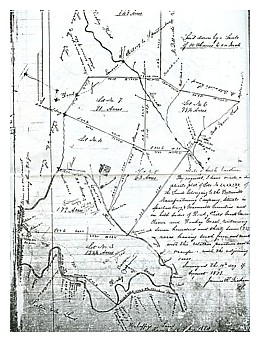
Ebenezer United Methodist Church, Greenville County, South Carolina was originally named Moon’s Meeting Place. In 1816, a group of men from Rhode Island came to neighboring Spartanburg County to establish a cotton mill. Among this group was a Methodist “lay” or “local” prea cher named Reverend Thomas Hutchings. Rev. Hutchings had been accepted as a minister in the Methodist Episcopal Church at the August 15, 1818, conference of the Enoree Circuit. It is known from early records that Rev. Hutchings was preaching at local “meeting houses” during these early years.

It was not until 1848 that the land upon which the church was built came into church ownership. The lands owned by Rev. Hutchings and Wm. Moon had been divided and sold several times between 1828 and 1848. In 1848, William Bates and Philip C. Lester (owners of the two local cotton mills) each deeded a portion of land “…unto the said trustees and their successors a lot or parcel of land whereon the said Ebenezer Church now stands…” The two acre square church lot as seen in an 1878 land plat was equally divided by the north to south property corners of the land previously owned by Rev. Hutchings and Mr. Moon. This same land had been part of a 200 acre South Carolina Land Grant tract deeded to Daniel Huger in 1784; originally vacant land lying just beyond what was then the Indian Boundary Line.
A Methodist Episcopal Church South Conference Report in 1884 describes Ebenezer Methodist Episcopal Church as “The present church building is the third that has been built here. It is a wood building 40 x 60 feet, neatly finished, with carpeted aisles and chancel.” This portion of the structure believed to have been built prior to 1848, and remains in use today. The post and beam structure has had several additions and many updates during its history. However, the altar and pulpit built by Victor Manning Snow, a local resident, remains in use, as does the church bell installed after 1858. The last four original pews were recently donated to the new Greenville History Museum for exhibit.
Bishop William Capers attended a camp meeting at Ebenezer prior to 1855 and states in his journal that he had stayed in the home of William Bates. In Greenville, The History of the City and County in the South Carolina Piedmont, A.V. Huff Jr., 1995, it is written: “The interracial nature of the antebellum Methodist camp meetings is reflected in a letter written by Bishop William Capers. Widely known as the founder of the Methodist mission to the plantation slaves, Capers commented that he was “struck with the appearance of the black portion of the congregation.” At the camp meeting at Ebenezer, Capers observed them “all dressed very finely; most of them in silks or muslins or broadcloths. Their appearance indicates good treatment, contentment and happiness.” In a 1954 report to the South Carolina Annual Conference an historian wrote. “At this place camp meeting was for some years held, the proprietors of the factories taking an active part in the support of these meetings. Ebenezer Methodist and Bethel Methodist (Simpsonville) were the last Methodist churches in Greenville County to hold camp meetings.
The African American members of Ebenezer Methodist Episcopal Church elected after 1868 to form a Methodist Church. Encouraged and aided by Rev. James R. Rosemond, the members organized Wesley Chapel Methodist Episcopal Church a short distance from Ebenezer. Reverend Rosemond was born in Greenville in 1820, both his parents were slaves. He began his preaching career in 1854, and in 1867 entered the Baker Theological Institute in Charleston. Returning to Greenville after one term he was ordained an elder in 1868. During the thirty-four years following his ordination, he was instrumental in establishing fifty churches in the upstate.
Ebenezer’s founding minister, Rev. Hutchings, was a noted preacher and aided in the organization of Greenville Methodist Church, 1832 (Buncombe St. UMC); Methodist Episcopal Church, Spartanburg, S.C. (Central UMC); Zoar UMC, Apalache and Mount Pleasant Methodist Church, Duncan. S.C. His obituary from the 1869 “Carolina Spartan” newspaper reads: “…there was no man in this section of country, a few years ago, more generally known that Rev. Thomas Hutchings…His reputation as a pulpit orator in the Methodist Church was very considerable—distinguished for uncommon fluency, and stirring earnestness of manner…”
Ebenezer United Methodist Church continues its Methodist heritage with “Open Hearts, Open Minds, and Open Doors” to all who desire to become disciples of Jesus Christ.